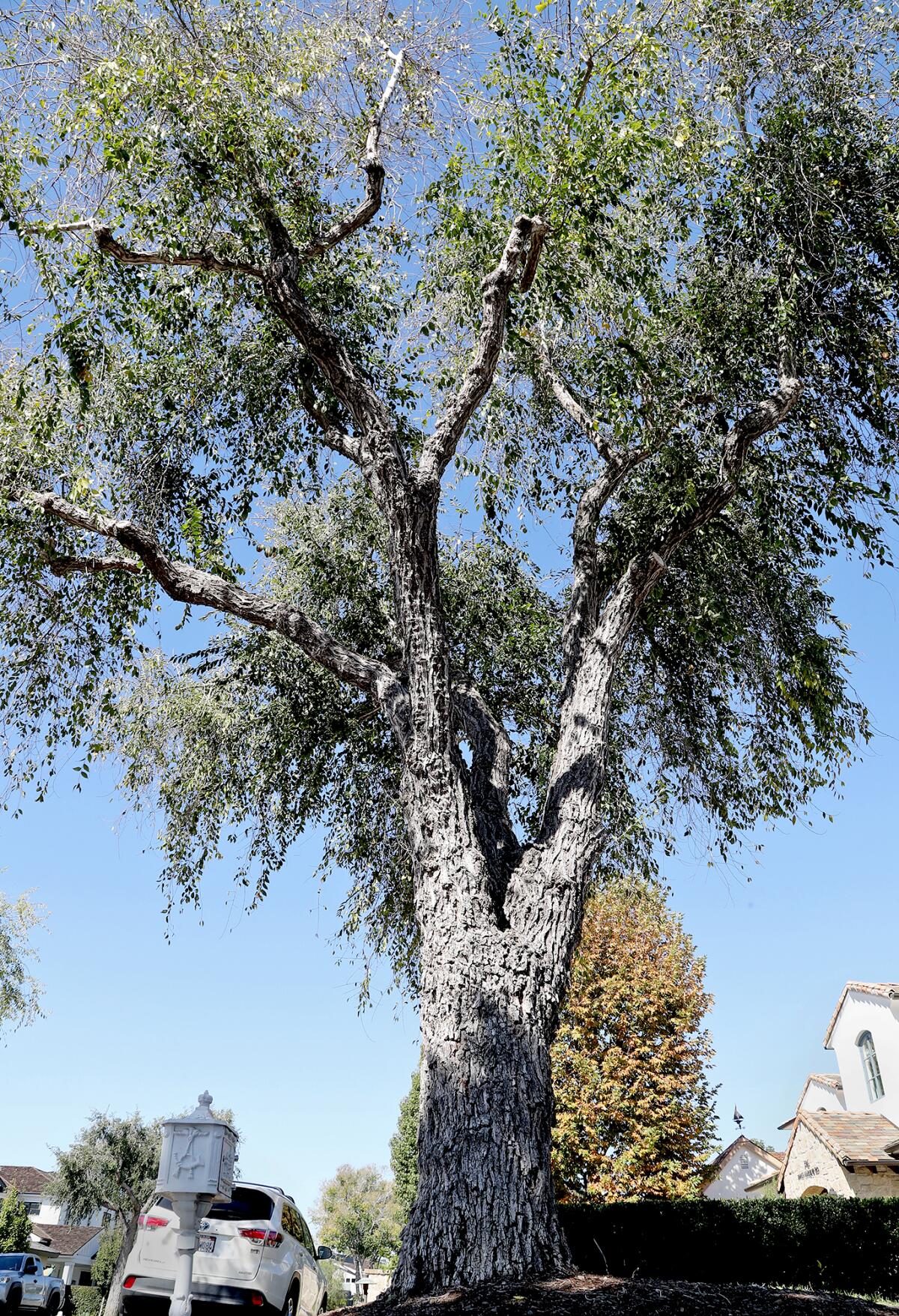Siberian elm tree roots itself in Newport Beach neighborhood after request to remove it is denied

- Share via
One homeowner’s tree is another homeowner’s treasure.
No one knows that more than new Newport Beach homeowner Jamie Bland, who was trying to get a tree removed since February because of the damage she says its roots have caused to her home.
At a Parks, Beaches and Recreation Commission meeting earlier this month, commissioners ruled in a 5-1 vote that the 70-year-old Siberian elm tree would remain rooted in its place in front of Bland’s home on Snug Harbor Road. Commissioner Kate Malouf cast the lone dissenting vote and Commissioner David Granoff was absent.
Bland said she and her husband moved to the city in January. At the time, Bland said that she loved the tree and didn’t have any intentions to have it removed.
It provides great shade and it’s beautiful, she said in an interview Wednesday.
The problem came when the new homeowners started to look into doing some drain work and the tree’s extensive roots became prohibitive to that work.
“Just as things get going, I was thinking, ‘This tree’s going to continue to be a hassle,’” said Bland.
“I called the arborist [John Nelson] to make sure it was on my property, but he said, ‘No, that’s a city tree. But, I can come out and check it out today to see if it’s healthy,’” said Bland.
That was back in February.
The tree in question is one of 17 Siberian elms the city is responsible for and Kevin Pekar, parks and trees superintendent for the city, said he gives it around a ‘B’ in terms of its health. He expects it to survive at least another 20 years, assuming it stays robust.
Bland asked what her options were. Ultimately she learned reforestation was a route she could take — meaning she could petition the city to remove the tree, but that she would need to plant a new one in its place.
“It sounded reasonable,” said Bland, who added that she intended to cover 100% of the costs for the city to remove and plant a new, 48 inch-box “Natchez” crape myrtle if approved.
Those trees do not have invasive roots, according to Pekar.
Then came the process during which Bland prepared a petition for the tree’s removal and sought signatures from neighbors. In late June Bland submitted the petition and the signatures on it were verified.
City staff said no formal petitions opposing the action were received.
The item would eventually come before the Parks, Beaches and Recreation Commission in August, but neighbor Craig Hudson objected to the tree’s removal and argued it was one of the original trees planted in the neighborhood.
Parks commissioners said Bland would need to provide more evidence that the tree’s roots were causing damage.
A city staff report prepared for the commission’s October meeting noted Bland submitted pictures documenting the damage caused by the root system. She also provided the estimated costs for repair and an invoice from when root-damaged yard drains required repairs.
Hudson did not respond to multiple requests for comment on the matter Wednesday, but did say in his remarks at the October meeting that the damage did not appear significant in the documented photos and alleged that Bland failed to get signatures from all neighboring residents within a 500-foot radius in accordance with city policies related to its reforestation program.
Pekar confirmed Wednesday that Bland submitted the application for reforestation prior to changes in city processes and was only required to gather a 60% of 30 private property owners 500 feet on both sides of her residence in order for the removal to be considered.
In a recent email he sent the Daily Pilot, Hudson wrote, “[The hearing] went very well ... this is my first foray into local politics on a very minor scale, but I was impressed how democratic the process worked.”
Bland said she’s not upset about the ruling, but, she said, the tree will eventually grow old, sick or die. When that happens, it won’t be at her expense. It’ll be the city’s financial responsibility.
“I’m not upset that we’re keeping the tree. We will definitely work around it. It’s fine and I will be a good tree steward as long as the tree lives. I was just taking it a little further because it’s not going to live forever and the property damage has occurred and will continue to occur,” Bland said.
All the latest on Orange County from Orange County.
Get our free TimesOC newsletter.
You may occasionally receive promotional content from the Daily Pilot.




